Special Report
Restaurant Reopening Restrictions in Every State

Published:
Last Updated:

Everybody wants our states and cities to reopen — to get back to business as usual. The situation is particularly critical for the restaurant industry, which has been especially hard hit by the pandemic. The National Restaurant Association (NRA) reports that some 100,000 restaurants across the country have already closed due to the effects of COVID-19, and a survey conducted by the organization found recently that 40% of the operators that remained open fear they will be out of business by spring. (These are 50 of the most popular restaurants that won’t reopen after the pandemic.)
Every state has its own reopening plans, typically divided into at least three phases and sometimes as many as five. The good news for restaurants is that as infection rates decline in various places, many states are substantially easing constraints and permitting indoor dining under specifically defined conditions.
A study of the NRA’s Restaurant Law Center Official Return to Work State Guidelines for Foodservice Establishments, as updated Oct. 1, shows that most states take a similar approach to such key issues as monitoring employee health, sanitizing every surface that could possibly harbor the virus, minimizing physical contact between employees and customers, and enforcing social distancing protocols and limits to table size.
Capacity limits, however, vary. A few states still restrict the seating of diners indoors to only 25% of fire code occupancy limits, but in other places the limit is 50%, 75%, or even 100% (with some restrictions). Note that these maximum percentages aren’t absolute and are contingent on restaurants being able to observe social distancing requirements as they fill their tables. Some states also specify the maximum number of people who can be seated in each room.
Click here to see restaurant reopening restrictions in every state.
There are also some notable differences between states regarding hours of service (particularly involving alcohol), the installation of physical (glass or plastic) barriers, and regulation of traffic flow for both diners and staff. And mask rules vary, too, with a few states merely recommending and not mandating their use indoors, and with age parameters varying. Connecticut and the District of Columbia, for instance, require face coverings for two-year-olds and up, while in Delaware the starting age is 11.
Every state takes seriously the safety of all concerned, though, and most have issued detailed guidelines to help restaurants begin functioning again.
Using the NRA report and other sources, 24/7 Tempo has assembled a state-by-state list of mask requirements, occupancy limits, and maximum table size, and has reported on some key features of each jurisdiction’s guidelines.
It is important to note, though, that while a number of states progressed over the summer to substantial easing of restrictions, many have since been forced to pause or roll back their plans as COVID-19 cases spiked. These are the states where the virus spread is slowing (and where it’s still getting worse).
Like seemingly everything else about COVID-19, the details of restaurant reopening policies are subject to change on a daily basis.
Methodology
To find information on seating capacities and table limits 24/7 Tempo reviewed the Official Return to Work State Guidelines for Foodservice Establishments published by the National Restaurant Association’s Restaurant Law Center, updated Oct. 1. Information on mask requirements was taken from the same source and from Facing Your Mask Duties — A List of Statewide Orders, current as of Oct. 2, published by Littler, a law firm specializing in labor and employment law. Other information comes from these two sources and from Nation’s Restaurant News as well as from published executive orders and health department guidelines from various states.

Alabama
> Mask mandate Yes
> Indoor seating capacity: 100% (with some restrictions) (with some restrictions)
> Maximum guests per table: 8
Alabama asks restaurants and other businesses open to the public to post a sign at the entrance “stating that individuals who have a fever, cough or any sign of sickness should not enter.” The sign should include a “description of their sanitation and social distancing measures.” The state of emergency under which restaurant restrictions apply has been extended to Nov. 8 by Gov. Kay Ivey.
[in-text-ad]
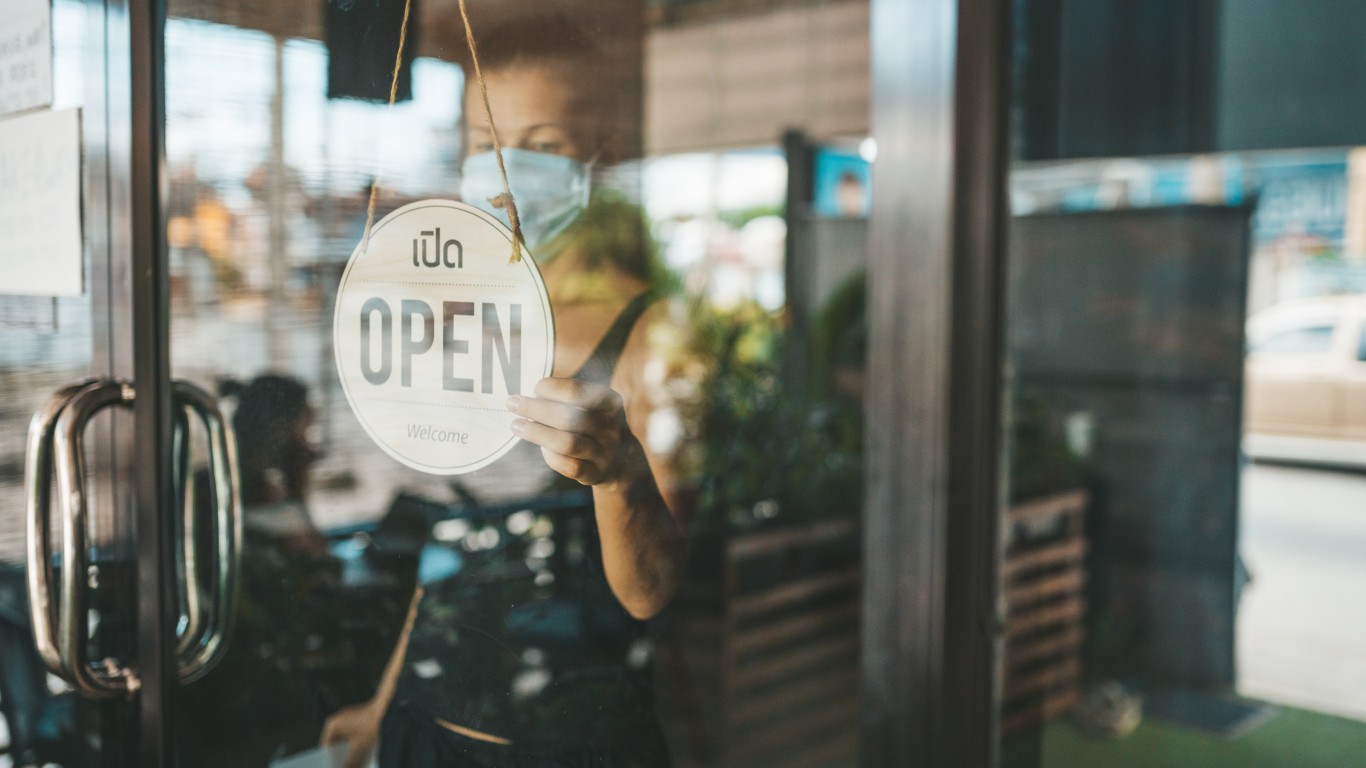
Alaska
> Mask mandate No (required in some municipalities)
> Indoor seating capacity: 100% (with some restrictions)
> Maximum guests per table: Not specified
The Alaska Department of Health and Social Services has issued a statement saying in part, “If more people wore masks, we could slow the spread of COVID-19.” Nonetheless, while some municipalities require masks to be worn in public environments, the state has not mandated them.
Arizona
> Mask mandate Yes
> Indoor seating capacity: 50%
> Maximum guests per table: 10
Gov. Doug Ducey issued an order that the 50% capacity limit would stay in effect as long as the COVID-19 positivity rate remains below 5%, and that bars and nightclubs would remain closed completely until the positivity rate drops below 3%. The latest seven-day positivity rate moving average, as reported by the Johns Hopkins Coronavirus Resource Center, hit 6.7%, though no order decreasing restaurant capacity has yet been issued.

Arkansas
> Mask mandate Yes
> Indoor seating capacity: 66%
> Maximum guests per table: 10
Restaurants in the state are encouraged to ask customers to pre-order meals in order to minimize the amount of time they spend at a table — and “to have a senior hour to provide exclusive access to these high-risk individuals.”
[in-text-ad-2]

California
> Mask mandate Yes
> Indoor seating capacity: 50% (maximum)
> Maximum guests per table: Not specified
By the terms outlined in his “Blueprint for a Safer Economy,” published on Aug. 28, Gov. Gavin Newsom established different restaurant capacity maximums by county, color-coded and based on local case and positivity rates. In purple counties, no indoor dining is permitted. In red counties, the maximum is 25% or 100 customers, whichever is the smaller number. Orange counties can operate at 50% or 200 customers, while yellow ones must limit their capacity to 50% with no limit on the total number of diners.

Colorado
> Mask mandate Yes
> Indoor seating capacity: 50%
> Maximum guests per table: 8
Colorado is more specific than other states in mandating 6-foot separations, requiring restaurants to “clearly mark floor and ground to delineate 6-foot spacing for people in lines, and mark how foot traffic should move” and to “clearly mark closed tables not available for seating customers.”
[in-text-ad]
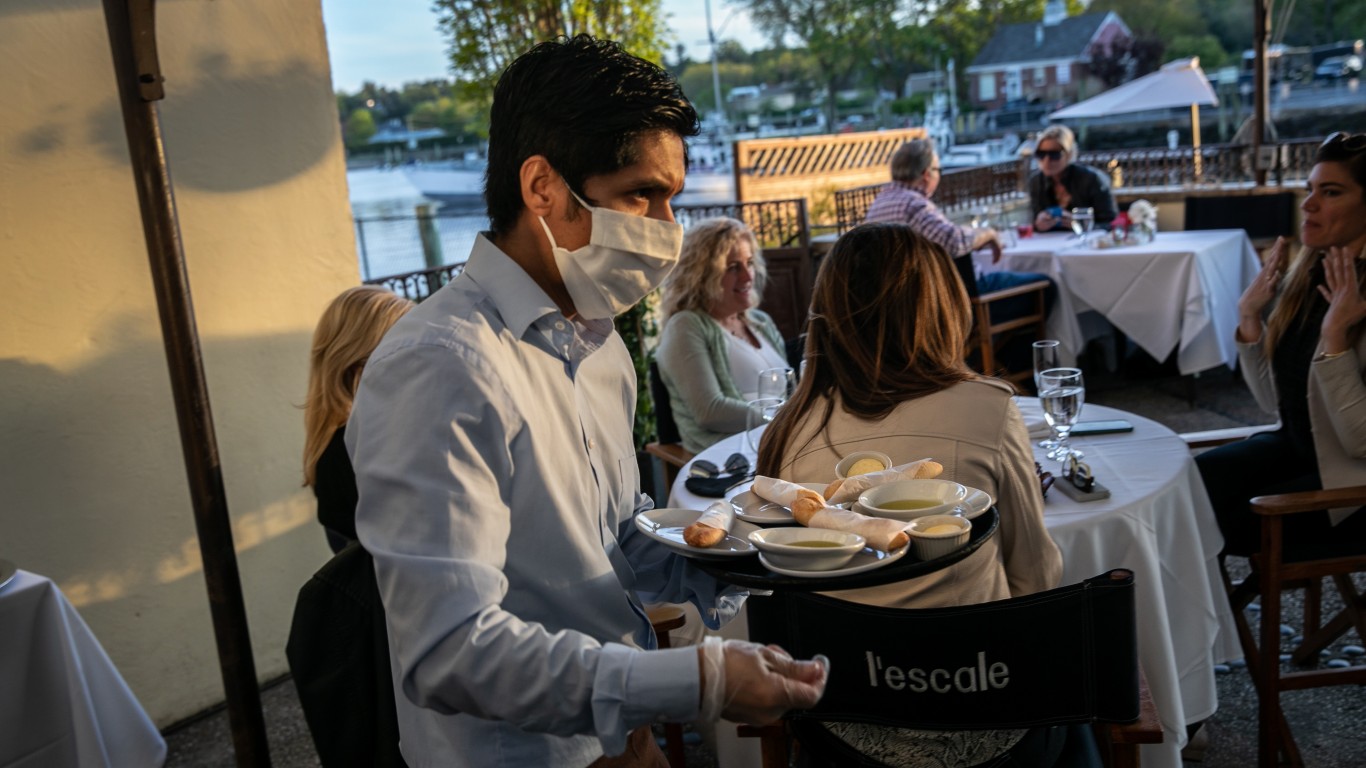
Connecticut
> Mask mandate Yes
> Indoor seating capacity: 75%
> Maximum guests per table: Not specified
The state asks that restaurants consider establishing separate entrances and exits so that one-way foot traffic is possible. Nonessential amenities like playgrounds, dance floors, and pool tables must be closed or removed.

Delaware
> Mask mandate Yes
> Indoor seating capacity: 60%
> Maximum guests per table: Not specified, but only members of the same family may be seated together
Delaware takes a voluntary approach to contact tracing. Restaurants must inform diners that they have the option to leave their information on file in case any staff members or other customers test positive, but they are not permitted to deny service to those who don’t provide their details.

Florida
> Mask mandate No (required in some municipalities)
> Indoor seating capacity: 100% (with some restrictions)
> Maximum guests per table: 10
An executive order signed by Gov. Ron DeSantis on Sept. 25 decreed that “No COVID-19 emergency ordinance may prevent an individual from working or from operating a business.” It also banned the assessment of fines or other penalties on those who don’t practice social distancing or wear masks, in restaurants or elsewhere.
[in-text-ad-2]

Georgia
> Mask mandate No (required in some municipalities)
> Indoor seating capacity: 100% (with some restrictions)
> Maximum guests per table: Not specified
In addition to other measures, the state encourages the use of “technological solutions where possible to reduce person-to-person interaction.” These include mobile access to menus, texting upon arrival to facilitate orderly seating, and contactless payment methods.
Hawaii
> Mask mandate Yes
> Indoor seating capacity: 50%
> Maximum guests per table: 6 (not living in same household), 10 (living in same household
Reopening guidelines from the Hawaii State Department of Health ask restaurants to “Consider a reservations-only business model for greater control of customer volume,” and to “Consider allowing customers to pre-order while making reservations to decrease the length of time they are in the establishment.”
[in-text-ad]

Idaho
> Mask mandate No (required in some municipalities)
> Indoor seating capacity: 100% (with some restrictions)
> Maximum guests per table: Not specified
In addition to asking restaurants to offer online, digital, and/or phone-in ordering and to implement explanatory signage and protection barriers to limit customer movement and establish distancing, Idaho requests — but doesn’t demand — that they establish dedicated hours of operation for diners at risk of severe disease.

Illinois
> Mask mandate Yes
> Indoor seating capacity: 100% (with some restrictions)
> Maximum guests per table: 10
Unlike many states, Illinois permits live music in restaurants but asks that performers as well as employees follow social distancing guidelines and that performers wear masks where practical. In addition, the placement of barriers between singers and others ( customers and employees) is encouraged.

Indiana
> Mask mandate Yes
> Indoor seating capacity: 100% (with some restrictions)
> Maximum guests per table: 6
Indiana moved to Stage 5 of its reopening process on Sept. 26, but in Marion County — home to Indianapolis, the state’s capital and largest city — indoor seating capacity remains at 75% due to the area’s high rate of coronavirus infection. Indiana’s mask mandate expires on Oct. 17.
[in-text-ad-2]

Iowa
> Mask mandate No (required in some municipalities)
> Indoor seating capacity: 100% (with some restrictions)
> Maximum guests per table: 6
According to an Iowa Department of Inspections & Appeals fact sheet for food-related businesses, while stringent sanitation standards have been set for employees, “[T]here are no issued mandates for employees and/or customers to wear protective face masks or other personal protective equipment.” The state asks only that “Each establishment operator should consider enforcing their own mitigation practices and/or strategies to protect their employees and customers from the spread of COVID-19.”
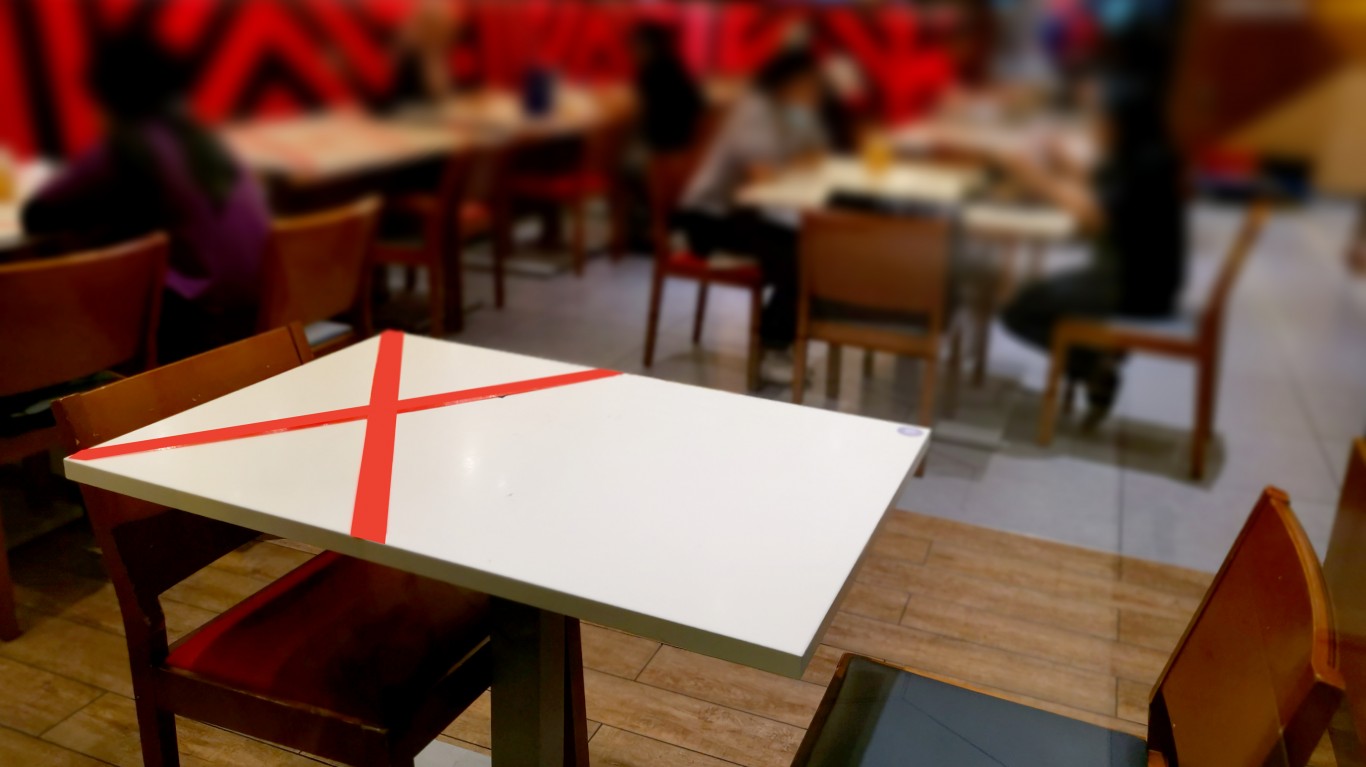
Kansas
> Mask mandate Yes
> Indoor seating capacity: 100% (with some restrictions)
> Maximum guests per table: 10
Kansas regulations state that “Restaurants must avoid any instances in which groups of more than 10 individuals are in one location and are unable to consistently maintain 6 feet of distance with only infrequent or incidental moments of closer proximity.”
[in-text-ad]
Kentucky
> Mask mandate Yes
> Indoor seating capacity: 50%
> Maximum guests per table: 10
The Bluegrass State is strict when it comes to mask-wearing in restaurants (and other indoor spaces). Restaurants are required to inform customers that masks are required except while actually eating or drinking and must refuse entry to those who would not cover up. Diners who wear masks to gain entry and then remove them while not consuming food or beverages must be refused service and asked to leave. Establishments that don’t follow these guidelines “will be subject to a fine and may also be subject to an order from the local health department or the Labor Cabinet requiring immediate closure.”

Louisiana
> Mask mandate Yes
> Indoor seating capacity: 75%
> Maximum guests per table: 10
Restaurants are required to assign crowd managers “to call for emergency evacuation, enforce the maximum capacity and social distancing requirements, assign seating, and further manage any movement of people at all times that the building is occupied.” These functions may be assumed by management or staff members who have been properly trained. One crowd manager is mandated for every 50 people in the establishment.

Maine
> Mask mandate Yes
> Indoor seating capacity: 100% (with some restrictions)
> Maximum guests per table: 8
Restaurants in Maine are required to maintain customer records, including the name and contact information for one member from each dining party as well as those of the table’s server, for at least 21 days. Establishments that could do so safely were permitted to set up outdoor dining spaces on sidewalks, in adjacent parking spaces, etc., but Portland streets that were closed to accommodate outdoor dining will reopen to traffic as of Nov. 1.
[in-text-ad-2]

Maryland
> Mask mandate Yes
> Indoor seating capacity: 75%
> Maximum guests per table: 6
While some states permit restaurants to contact diners waiting for tables by pager, Maryland guidelines state that this should be avoided. Instead, they should use “phone apps, texting, or signs to let patrons know when their table or carryout order is ready.”

Massachusetts
> Mask mandate Yes
> Indoor seating capacity: 100% (with some restrictions)
> Maximum guests per table: 10
“While indoor table service is permitted,” according to the state’s latest restaurant safety standards checklist, issued Oct. 1, “restaurants are encouraged to structure operations to operate as much as possible through outdoor table service and to strictly limit indoor table service in order to assure effective compliance with social distancing requirements and to limit activities within confined spaces.”
[in-text-ad]

Michigan
> Mask mandate Yes
> Indoor seating capacity: 50%
> Maximum guests per table: Not specified
The state’s operational guidelines for restaurants ask establishments to create “communications materials” like signs or pamphlets for customers informing them of changes to dining practices and outlining precautions being taken to prevent the spread of the coronavirus.
Minnesota
> Mask mandate Yes
> Indoor seating capacity: 50%
> Maximum guests per table: 4 (not living in the same household), 6 (living in the same household)
Minnesota seems particularly concerned about infection in the course of the payment process. It asks that restaurants utilize electronic fund transfer or credit card payment of a kind that allows customers to complete the transaction remotely. “When contactless payment is not possible,” state guidelines mandate that payment be made “in a manner that allows for at least 6 feet of distance between the worker and client or customer.”

Mississippi
> Mask mandate Yes
> Indoor seating capacity: 75%
> Maximum guests per table: 10
The state encourages, but does not mandate, the use of technology to avoid as much in-person contact as possible, including mobile reservation and ordering systems and contactless payment.
[in-text-ad-2]

Missouri
> Mask mandate No (required in some municipalities)
> Indoor seating capacity: 100% (with some restrictions)
> Maximum guests per table: 10
Though its guidelines for restaurants are less detailed than those issued by most other states, the Missouri Department of Health and Senior Services includes the advisory that “Operators need to be flexible about canceling or rescheduling reservations and events.”

Montana
> Mask mandate Yes (for counties with four or more confirmed and active COVID-19 cases)
> Indoor seating capacity: 75%
> Maximum guests per table: 6
While most restaurants are open for indoor service, Montana rules stipulate that “In-house dining for quick service restaurants should remain closed, if all guidelines can’t be met, including the cleaning of everytable between customers.”
[in-text-ad]

Nebraska
> Mask mandate No
> Indoor seating capacity: 100% (with some restrictions)
> Maximum guests per table: 8
In its own efforts to minimize the possibility of infecting diners, Nebraska discourages restaurant staff members from fulfilling more than one function (an example would be a server also taking payment for the meal). The state also recommends that restaurants that can’t provide touchless payment options consider disinfecting credit cards before returning them to the customer.

Nevada
> Mask mandate Yes
> Indoor seating capacity: 50%
> Maximum guests per table: 5 (6 in bar areas within restaurants)
Nevada asks that establishments post signage throughout the restaurant about the proper use of face coverings and rules for social distancing, specifying that the latter should be in multiple languages.

New Hampshire
> Mask mandate Yes
> Indoor seating capacity: 100% (with some restrictions)
> Maximum guests per table: 6
Though as a general statewide rule, restaurants are allowed to operate at 100% (with some restrictions) capacity for indoor dining, seating in four counties is limited to 50%, and in six others, “seated dining areas are limited in capacity to the number of people/tables where table spacing is able to be maintained,” in accordance with social distancing protocols.
[in-text-ad-2]
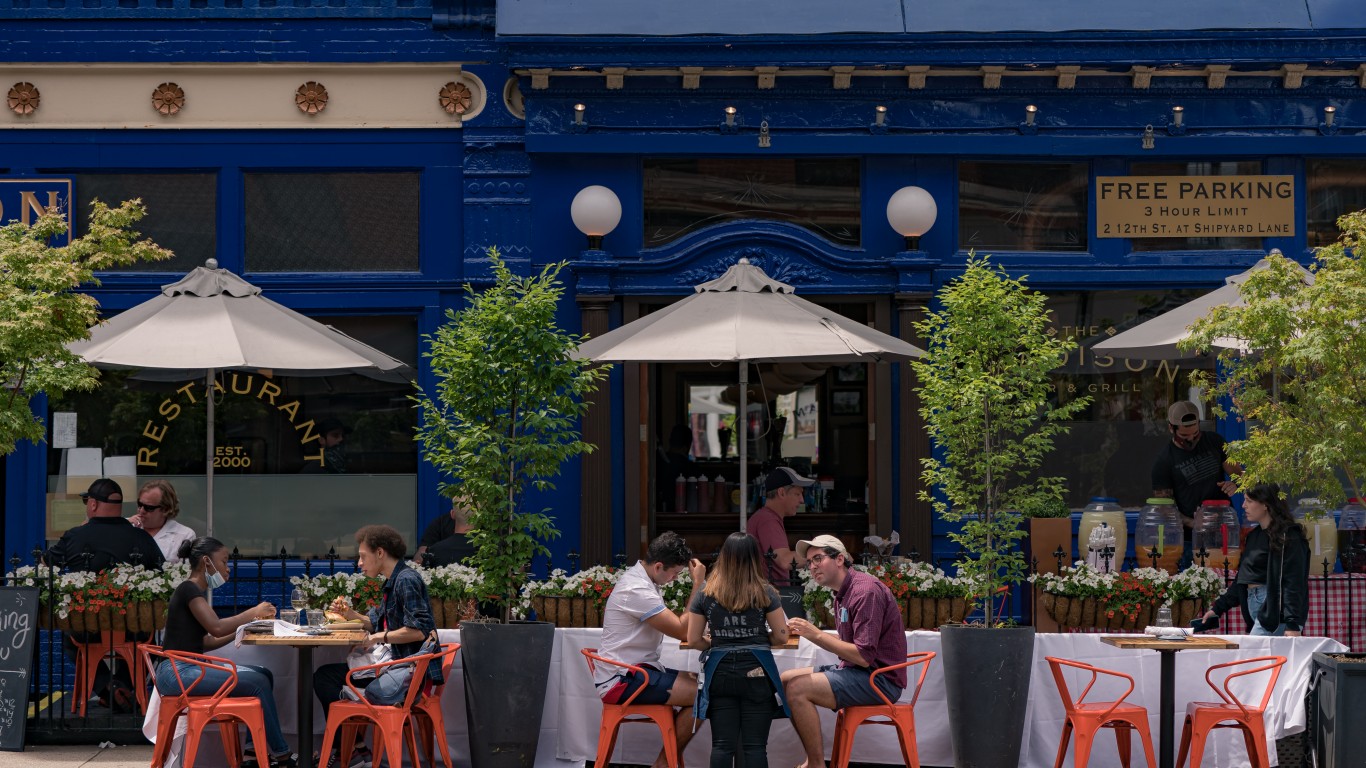
New Jersey
> Mask mandate Yes
> Indoor seating capacity: 25%
> Maximum guests per table: 8 (unlimited for members of the same family from the same household)
According to guidelines on the New Jersey COVID-19 Information Hub, as updated on Sept. 29, “Areas with a fixed roof, if two sides are open, comprising over 50% of their total wall space, may operate under rules for outdoor dining.” That means that there’s no capacity limit, as long as social distancing, masking, and other safety measures are observed.
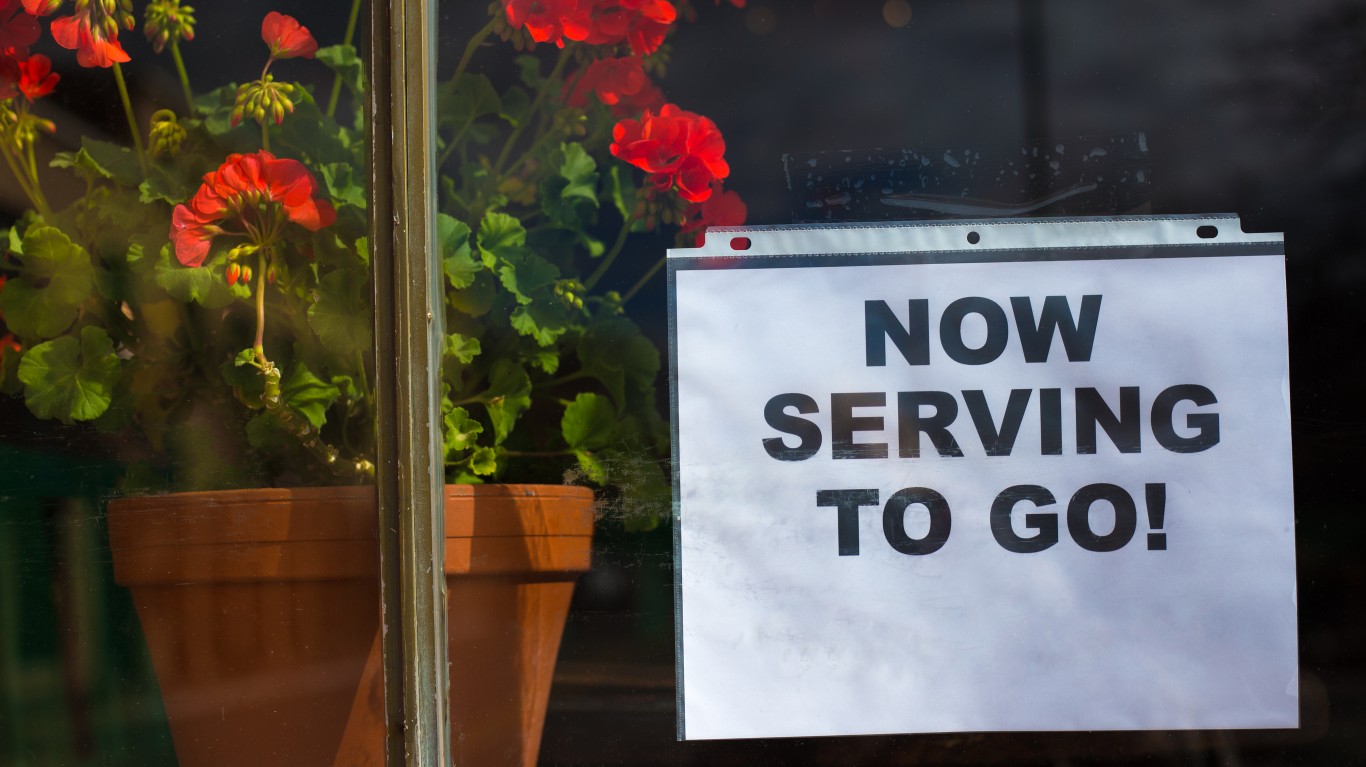
New Mexico
> Mask mandate No
> Indoor seating capacity: 25%
> Maximum guests per table: 6
On Aug. 5, the state’s Environment Department filed an emergency amendment to its rules for reporting occupational injuries, illnesses, and fatalities, requiring employers to report COVID-19 cases within four hours of learning that an employee has tested positive. The amendment is effective for a period of 120 days from its date of issue. New Mexico also requires restaurants to retain a contact tracing log for all customers and employees who enter their establishments.
[in-text-ad]
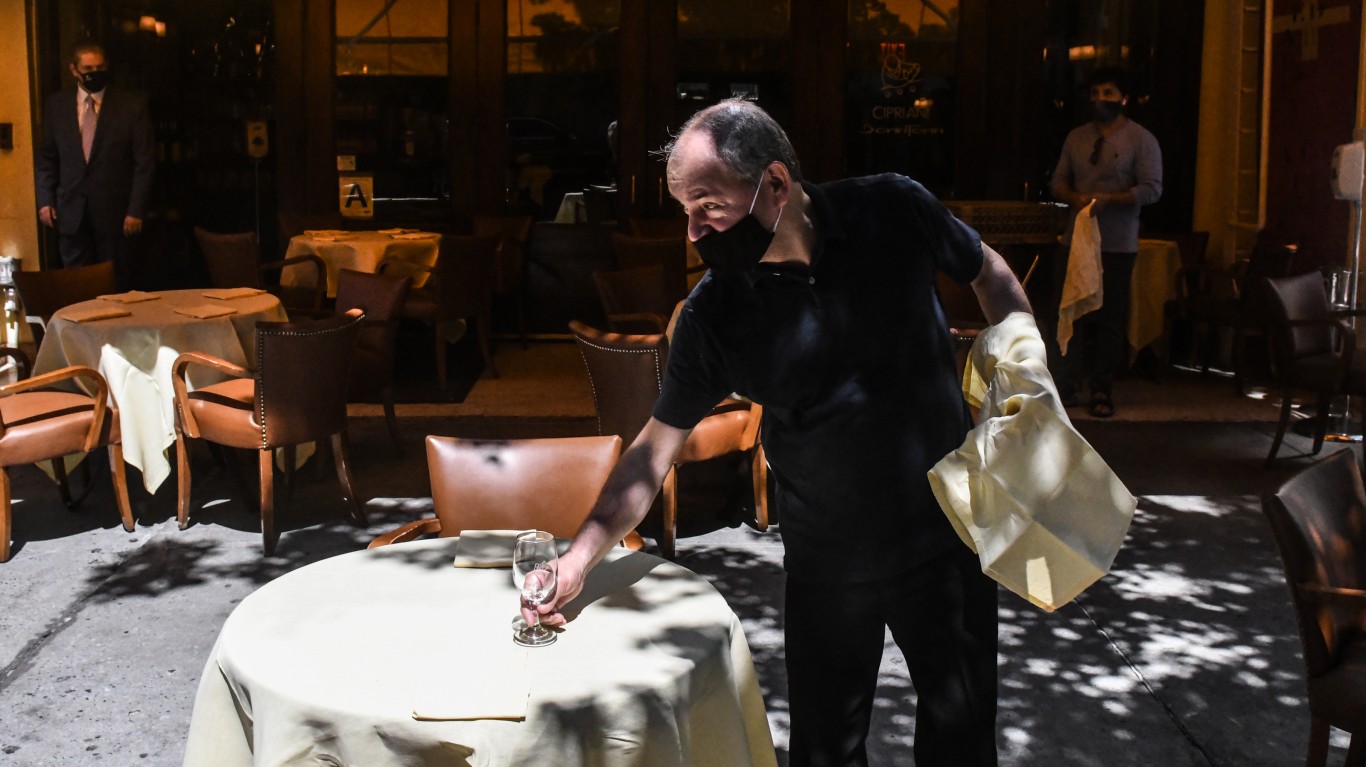
New York
> Mask mandate Yes
> Indoor seating capacity: 50% (25% in New York City)
> Maximum guests per table: 10
New York has issued particularly detailed protocols regarding employee and customer PPE and health checks, sanitation, distancing and occupancy restrictions, and changes to payment systems, as well as offering other operational guidelines. Restaurant owners or managers “are encouraged to phase-in reopening activities so as to allow for operational issues to be resolved before production or work activities return to normal levels,” the protocols state.

North Carolina
> Mask mandate Yes
> Indoor seating capacity: 50%
> Maximum guests per table: 10 (unlimited for members of the same household)
North Carolina entered Phase 3 of its reopening plan on Oct. 2. Bars are now permitted to operate at 30% capacity (or with a maximum of 100 customers) outdoors. However, an 11 p.m. curfew on the consumption of alcoholic beverages in both bars and restaurants extends until Oct. 23.

North Dakota
> Mask mandate No
> Indoor seating capacity: 50%-100% (with some restrictions) (depending on local risk level)
> Maximum guests per table: 10
The state ranks jurisdictions with color-coded indicators applied to sanitation, distancing and occupancy restrictions, and other operational factors. Red signifies critical risk, with closure of establishments recommended. Blue is “new normal,” meaning that normal activities can resume, but with “heightened cleaning, standard precautions and awareness of health guidelines TBD.” Orange, yellow, and green signify various stages between the two.
[in-text-ad-2]

Ohio
> Mask mandate Yes
> Indoor seating capacity: 100% (with some restrictions)
> Maximum guests per table: 10
Like some other states, Ohio has established a curfew for alcohol sales and consumption: None may be sold in restaurants after 10 p.m. nightly, and drinks must be finished by 11 p.m. New guidelines, however, have expanded the number of drinks that may be sold with each meal ordered to-go from two to three.

Oklahoma
> Mask mandate No (required in some municipalities)
> Indoor seating capacity: 100% (with some restrictions)
> Maximum guests per table: Not specified
Oklahoma is the only state that asks restaurants to limit the use of high-risk staff members, meaning those who are immunocompromised or over the age of 65. Guidelines also instruct operators to “Cross-train personnel to perform essential functions so that the workplace is able to operate even if key staff members are absent.”
[in-text-ad]
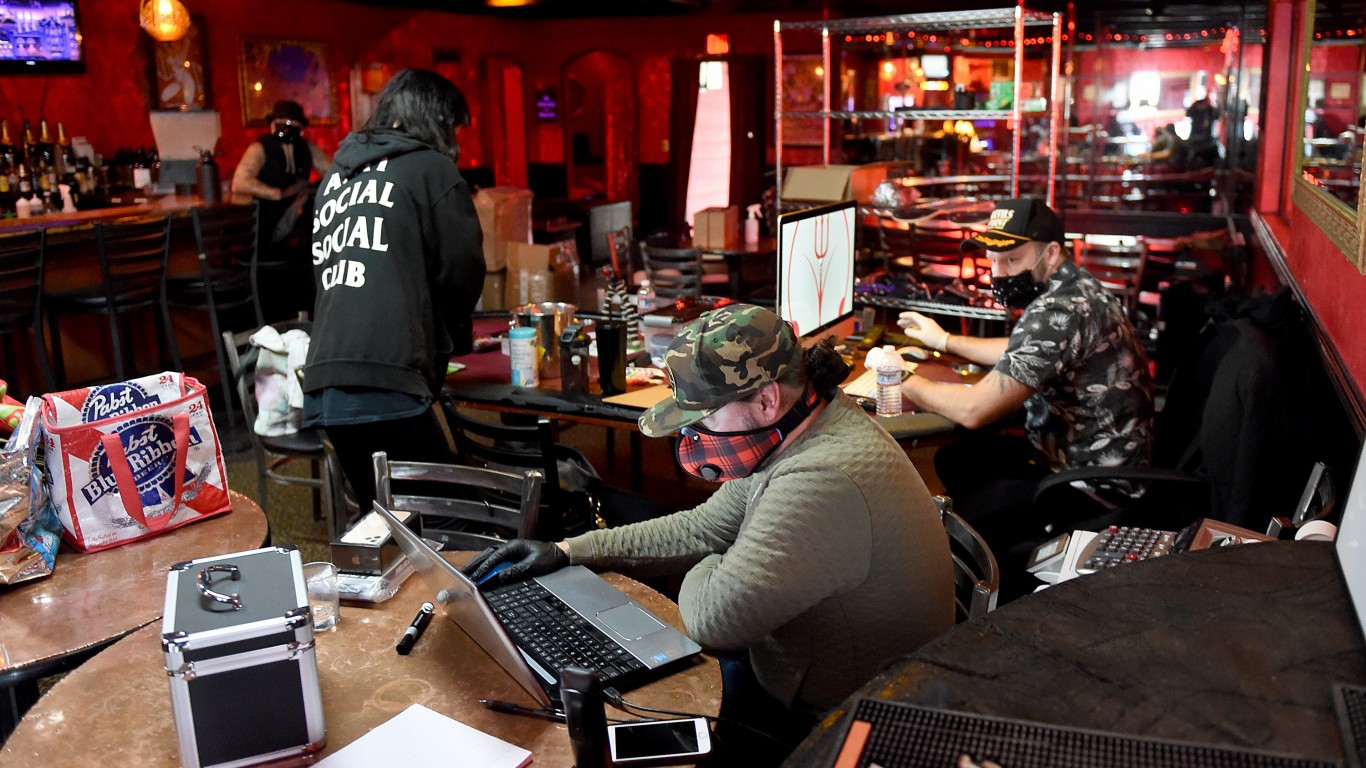
Oregon
> Mask mandate Yes
> Indoor seating capacity: 100% (with some restrictions)
> Maximum guests per table: 10
Oregon’s original guidelines merely suggested that restaurants encourage customers to wear face coverings, and noted that if a business decides to require them, “management should consult with their legal counsel to determine whether such a requirement can be enforced.” New requirements issued July 22, however, made masks mandatory.
Pennsylvania
> Mask mandate Yes
> Indoor seating capacity: 50%
> Maximum guests per table: 10 (unlimited for members of the same household)
In an effort to make the payment process as safe as possible on both sides, Pennsylvania asks restaurants to adopt such measures as using no-contact apps, erecting glass or plastic barriers between customers and employees, and providing hand-sanitizing facilities for use by both after they handle credit cards, PIN terminals, or cash.
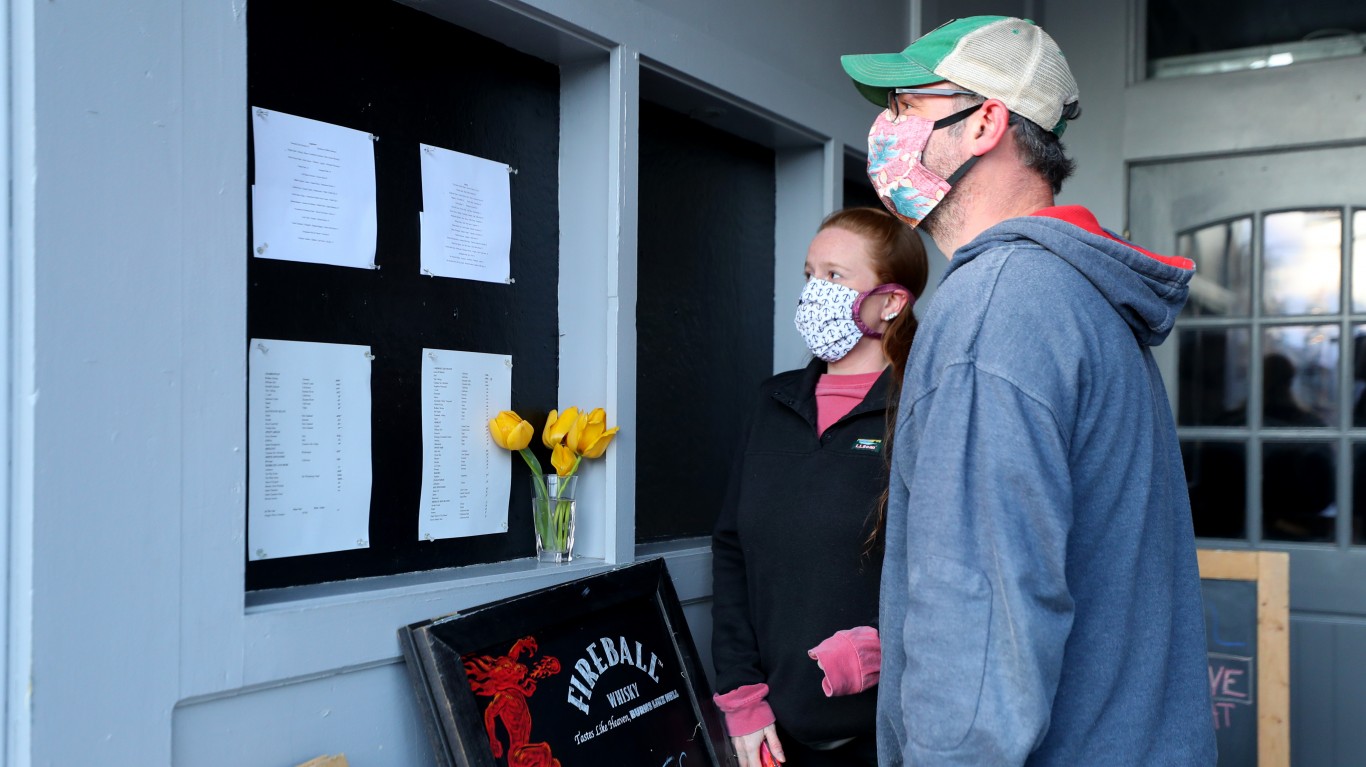
Rhode Island
> Mask mandate Yes
> Indoor seating capacity: 66%
> Maximum guests per table: 8
Rhode Island’s extensive reopening guidelines for restaurants include the notation that “no mingling or congregating and no standing service or consumption is allowed.” To that end, the guidelines continue, “establishments and event planners/hosts may wish to consider options such as individualized boxes of hors d’oeuvres/appetizers (i.e. no passed hors d’oeuvres/appetizers), seated ‘cocktail hours,’ and direct table service for all food and beverages (i.e. not providing traditional bar service).”
[in-text-ad-2]
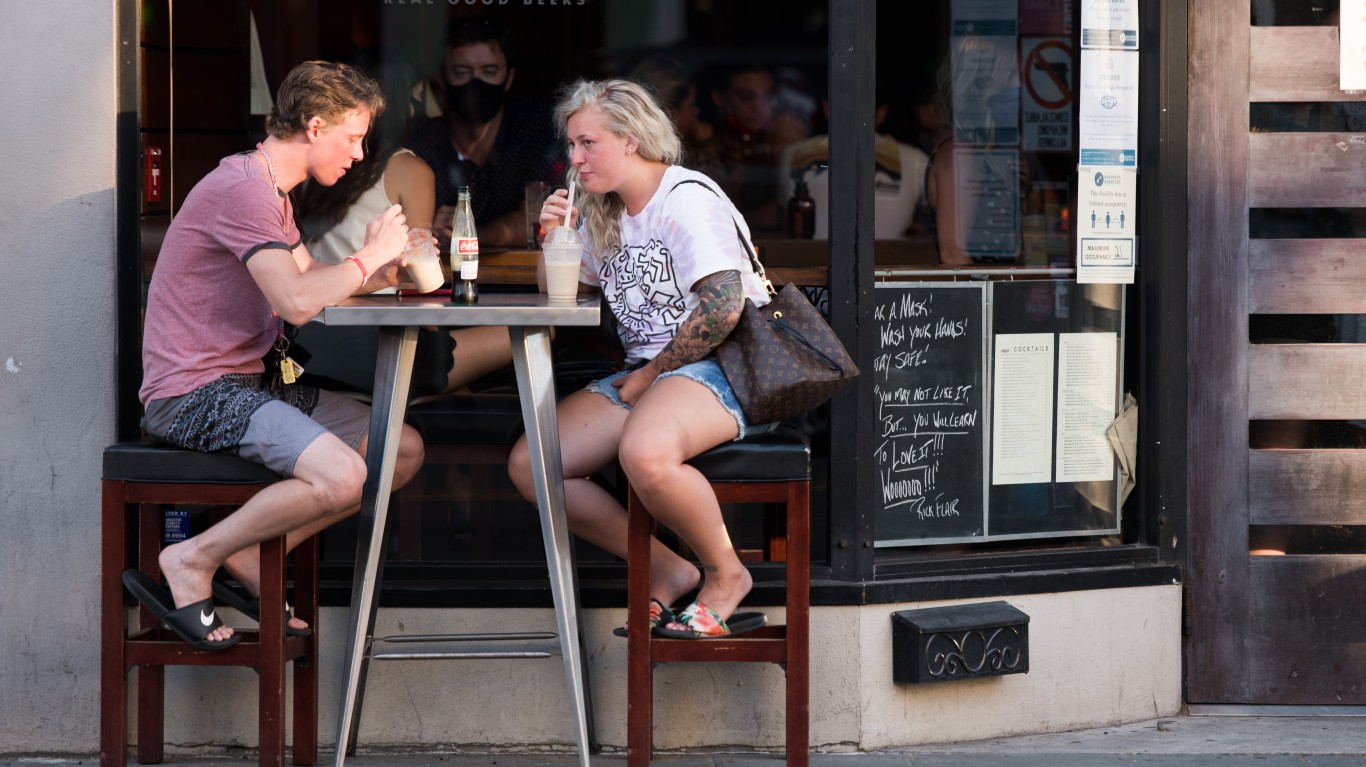
South Carolina
> Mask mandate No (required in some municipalities)
> Indoor seating capacity: 100% (with some restrictions)
> Maximum guests per table: 8
The South Carolina Department of Parks, Recreation & Tourism has collaborated with the state’s Restaurant and Lodging Association to establish a voluntary program called Palmetto Priority. According to its website, “Restaurants that choose to participate in the program will complete a checklist of operational assurances as outlined in the restaurant reopening guidelines, participate in required free online education, and participate in a DHEC [Department of Health and Environmental Control] limited-scope food safety inspection.”
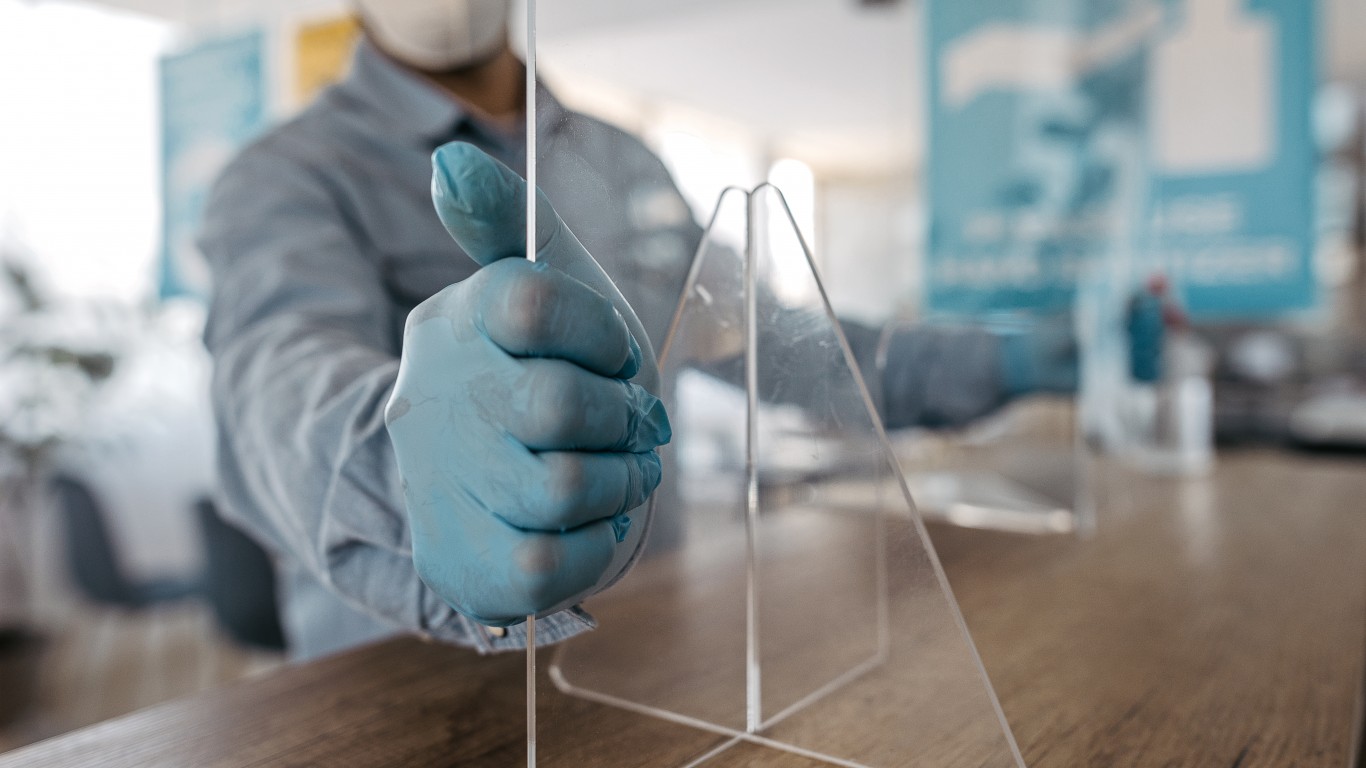
South Dakota
> Mask mandate No (required in some municipalities)
> Indoor seating capacity: 100% (with some restrictions)
> Maximum guests per table: Not specified
Among the many recommendations on the South Dakota Department of Health’s COVID-19 Restaurant Business Checklist, establishments are advised to suspend the operation of salad bars and buffets. Alternatively, they may “consider a cafeteria style (worker served) approach; installing sneeze guards; frequently changing, washing, and sanitizing utensils; and placing visual markers to adequately space patrons while in line.
[in-text-ad]
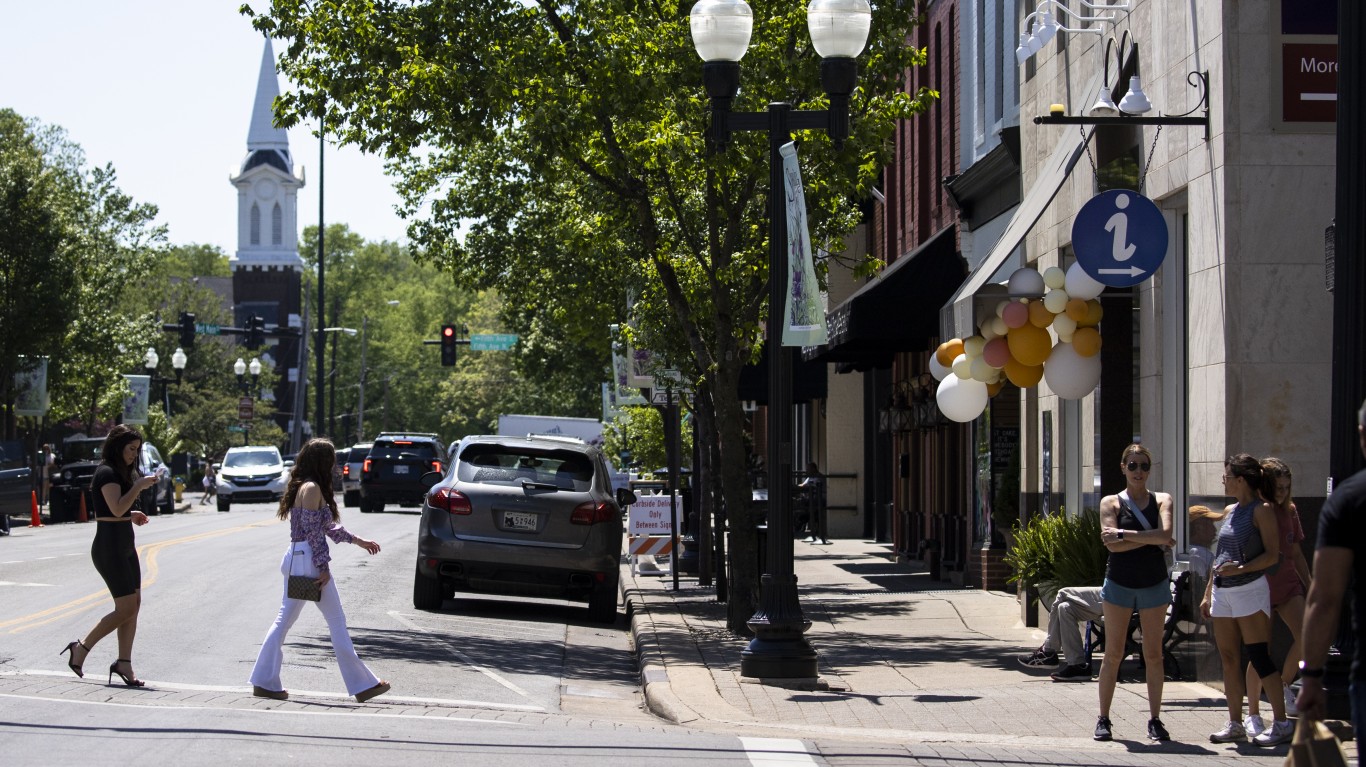
Tennessee
> Mask mandate No (required in some municipalities)
> Indoor seating capacity: 100% (with some restrictions)
> Maximum guests per table: 10
One recommendation on the state’s list of restaurant guidelines is obviously particularly difficult for the capital city of Nashville — sometimes known as Music City, U.S.A. “Avoid offering live music unless appropriate precautions are taken,” it reads, noting that singing may project respiratory droplets in considerable quantity and over substantial distance. Establishments that do offer music should “Maintain at least 15 feet of separation — and more if possible — between audience members and performers.”
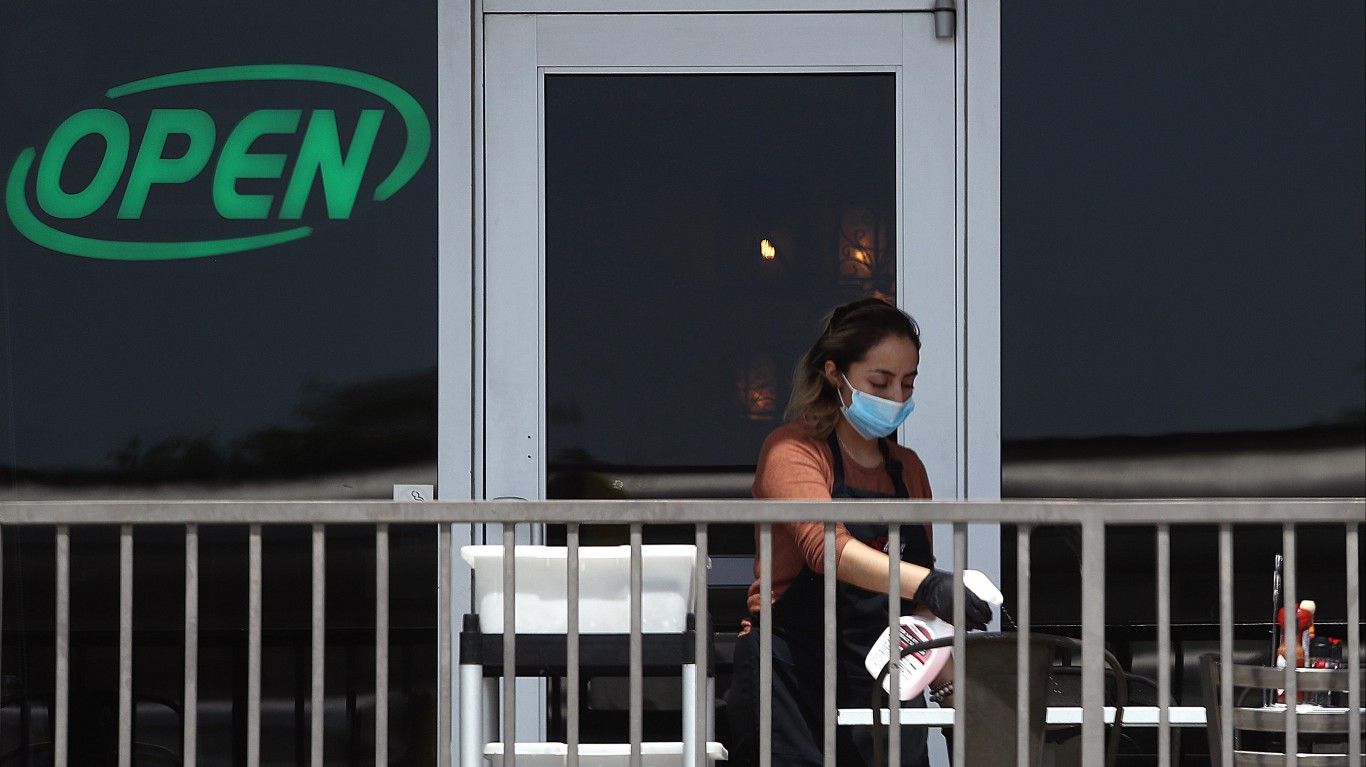
Texas
> Mask mandate Yes
> Indoor seating capacity: 50% (75% in regions where COVID-19-related hospitalization rate is below 15%)
> Maximum guests per table: Not specified
Texas has mandated the wearing of face coverings in public spaces, including restaurants, since July “wherever it is not feasible to maintain six feet of social distancing from another person not in the same household.” Counties with fewer than 20 active COVID-19 cases are exempt from the requirement. One specific state guideline recommends that restaurants assign an employee to “manage and control access […] including opening doors to prevent patrons from touching door handles.”

Utah
> Mask mandate Yes
> Indoor seating capacity: 100% (with some restrictions)
> Maximum guests per table: 10
One of Utah’s recommendations is that restaurant hosts point entering guests to signage that “Outlines symptoms and encourages that if the patron, or someone they live with, has experienced COVID-19 symptoms, to please order takeout instead.” It is also recommended that high risk individuals opt for takeout or delivery instead of in-house dining.
[in-text-ad-2]
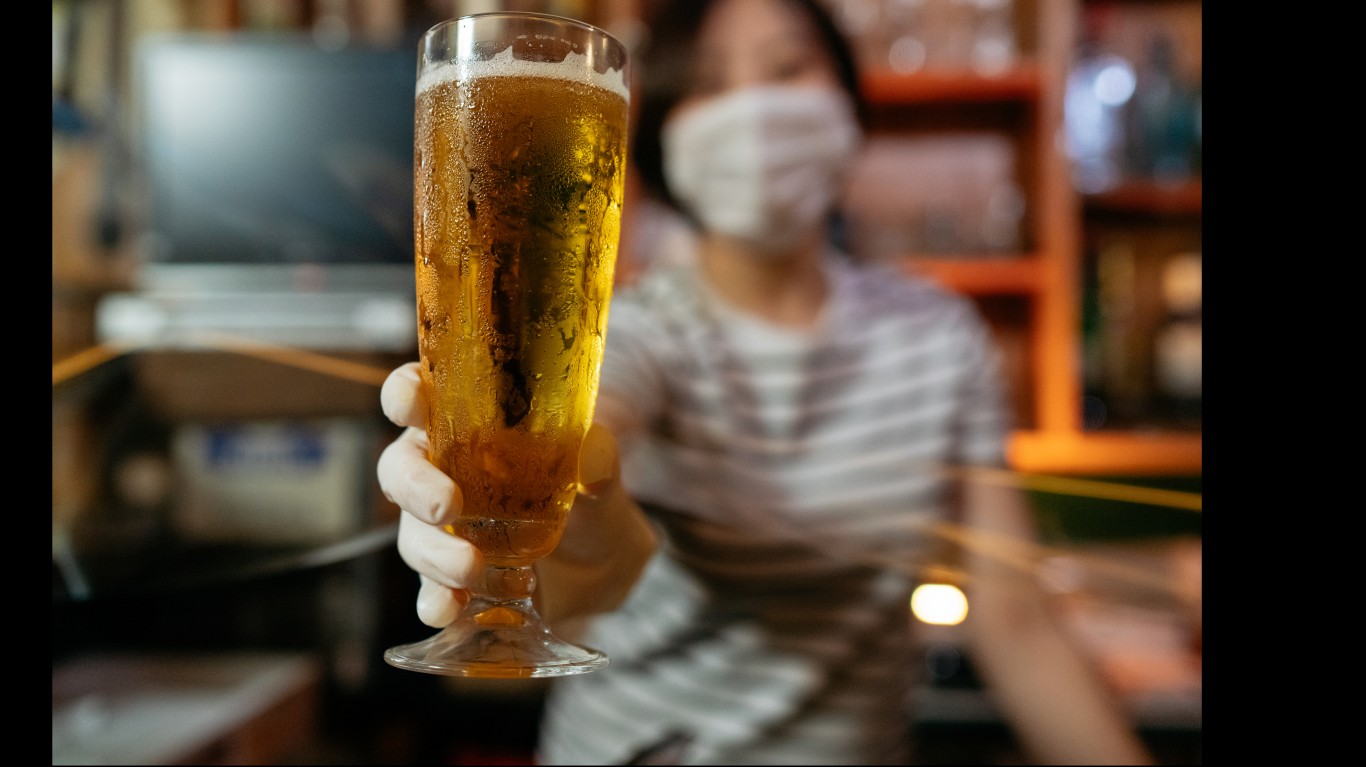
Vermont
> Mask mandate Yes
> Indoor seating capacity: 50%
> Maximum guests per table: Not specified
Unlike many states, Vermont permitted bars to reopen, effective Sept. 18, but with a physical barrier, such as a sheet of plexiglass, between the bar and its customers and a requirement that each group stays at least 6 feet away from others.
Virginia
> Mask mandate Yes
> Indoor seating capacity: 50%
> Maximum guests per table: 10
According to an executive order issued by Gov. Ralph Northam, effective July 31, cities and counties in the Hampton Roads region of the state — including Virginia Beach, Norfolk, and Williamsburg — are subject to more stringent restrictions than the rest of the state. These include a ban on the sale, consumption, or possession of alcohol in “any restaurant, dining establishment, food court, brewery, microbrewery, distillery, winery, or tasting room” after 10 p.m. nightly. The governor’s office points out that “While Virginia law does not distinguish between restaurants and bars, the 10:00 p.m. curfew for alcohol sales and consumption, in addition to the current restrictions on seating or congregating in bar areas, effectively closes bars in the region.”
[in-text-ad]

Washington
> Mask mandate Yes
> Indoor seating capacity: 50%
> Maximum guests per table: 5
Washington requires that “A site-specific COVID-19 monitor shall be designated at each location to monitor the health of individuals and enforce the COVID-19 job site safety plan.” According to the state’s guidelines, restaurant capacity will remain at 50% until a vaccine or other effective treatment for COVID-19 is readily available.
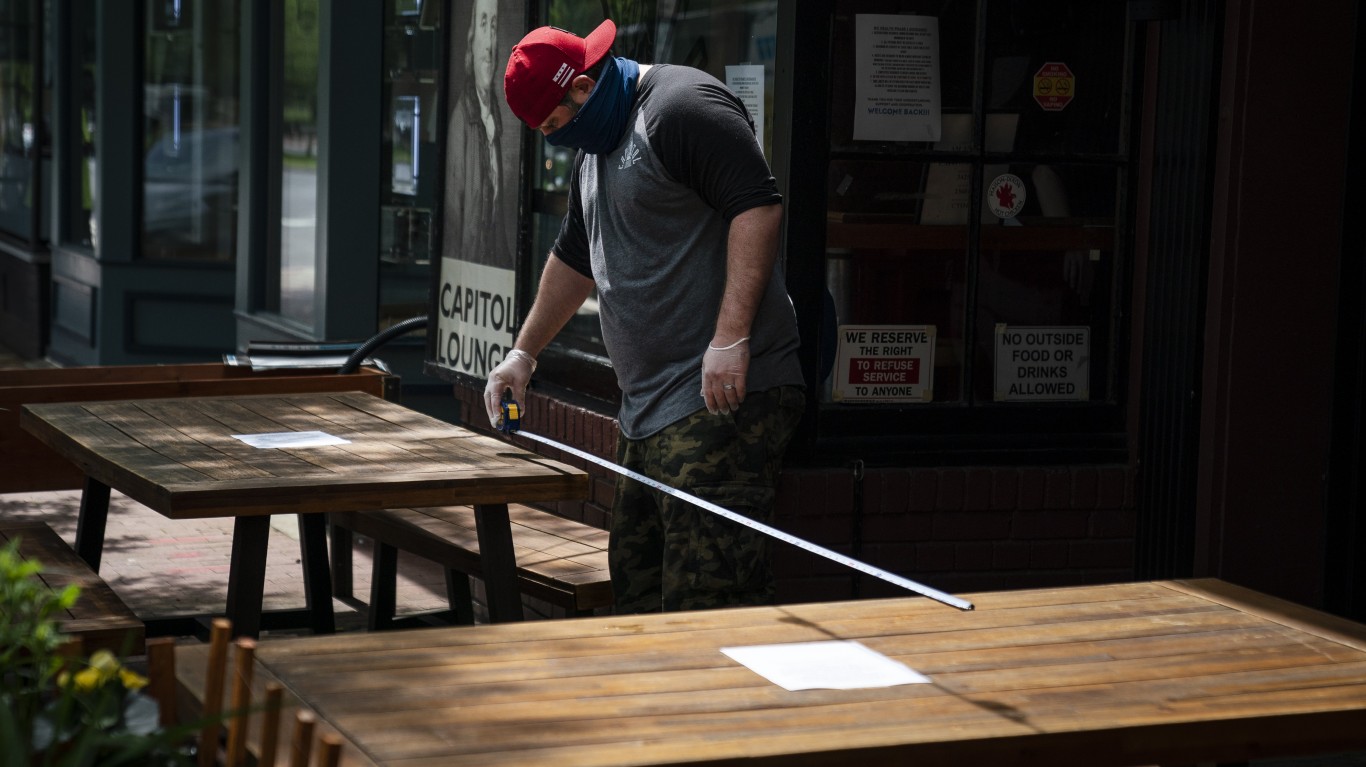
Washington, D.C.
> Mask mandate Yes
> Indoor seating capacity: 50%
> Maximum guests per table: 6
Many states have entered Phase 3 of their reopening programs, but the District of Columbia remains in Phase 2. In addition to specifying safety measures for employees, D.C. Health’s Phase Two Guidance for Restaurants cautions establishments to “Inform and remind third-party delivery drivers and any suppliers about social distancing, face covering and hand hygiene requirements.” It also notes that “If the building was closed for an extended period of time, remember to check HVAC systems and ensure all water systems are safe to use.”
West Virginia
> Mask mandate Yes
> Indoor seating capacity: 50%
> Maximum guests per table: 6 for outdoor dining (not specified for indoor dining)
West Virginia’s guide to restaurant reopening, dramatically dubbed “West Virginia Strong — The Comeback,” strongly encourages the use of disposable utensils and containers and of disposable or no-touch menus, the serving of drinks in cans and bottles where possible, and the prioritization of takeout and curbside pick-up services.
[in-text-ad-2]

Wisconsin
> Mask mandate Yes
> Indoor seating capacity: 100% (with some restrictions)
> Maximum guests per table: 6
The Wisconsin Restaurant Association, in partnership with state health officials, has issued an extensive list of recommended practices for food service providers. Among these, “Limit contact between waitstaff and guests […] Install physical barriers, such as sneeze guards and partitions at cash registers, bars, host stands, and other areas where maintaining physical distance of six feet is difficult [….] Use technology solutions where possible to reduce person-to-person interaction.”

Wyoming
> Mask mandate No
> Indoor seating capacity: 100% (with some restrictions)
> Maximum guests per table: 8 (unlimited for members of the same household)
The state requires restaurants to keep a log of staff work periods by date and time to enable COVID-19 contact tracing if necessary. It doesn’t mandate maintaining similar records for customers. If the staff logs are kept manually, the state specifies that “sanitizing measures must be taken on the instruments used.”
Credit card companies are handing out rewards and benefits to win the best customers. A good cash back card can be worth thousands of dollars a year in free money, not to mention other perks like travel, insurance, and access to fancy lounges. See our top picks for the best credit cards today. You won’t want to miss some of these offers.
Flywheel Publishing has partnered with CardRatings for our coverage of credit card products. Flywheel Publishing and CardRatings may receive a commission from card issuers.
Thank you for reading! Have some feedback for us?
Contact the 24/7 Wall St. editorial team.